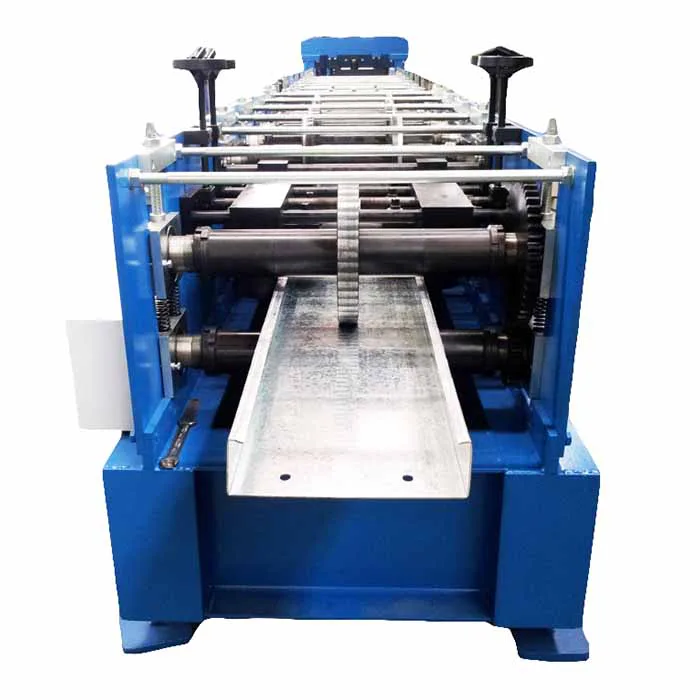
The Evolution of Snap Lock Pipe Machines- From Manual to CNC Systems
- By:Metmac
- 2024-09-10
- 162
In the labyrinthine network of pipelines that power our modern world, snap lock pipe machines have played a pivotal role in shaping their efficiency and durability. From humble beginnings to the cutting-edge advancements of today, this article traces the transformative journey of these machines, exploring their technological evolution from manual to CNC systems.
Manual Snap Lock Pipe Machines: The Dawn of Precision
In the early days, snap lock pipe machines were manually operated, with skilled technicians meticulously joining pipes together using hammers and specialized tools. These machines, although laborious, laid the foundation for the industry and set the stage for future innovations.
Semi-Automatic Machines: A Glimpse of Automation
As the demand for faster and more efficient production surged, semi-automatic snap lock pipe machines emerged. These machines introduced hydraulic cylinders to assist in the pipe joining process, reducing the physical effort required and increasing production speed.
Enter CNC Systems: Precision Redefined
The true revolution arrived with the advent of CNC (Computer Numerical Control) systems. CNC snap lock pipe machines leveraged advanced computer-aided design (CAD) and manufacturing (CAM) software to automate the entire pipe joining process. CNC machines boast unmatched accuracy, repeatability, and speed, enabling the production of highly precise and reliable pipe joints.
Advanced Features and Benefits
Modern CNC snap lock pipe machines are equipped with a myriad of advanced features that enhance their performance and versatility, including:
High-speed linear drives for rapid pipe movement
Pressure sensors to ensure optimal joining force
Automatic pipe loading and unloading systems
Intuitive human-machine interfaces for ease of operation
Data logging capabilities for quality control and traceability
Impact on the Industry
The evolution of snap lock pipe machines from manual to CNC systems has profoundly impacted the industry:
Increased productivity: CNC machines enable faster production rates, minimizing downtime.
Improved quality: Precise control ensures consistent and reliable joint quality.
Reduced labor costs: Automation significantly reduces the need for manual labor, freeing up resources for other tasks.
Enhanced safety: Automated systems eliminate the risk of accidents associated with manual operations.
Expanded applications: CNC machines can handle a wider range of pipe sizes and materials, broadening their applicability.
The evolution of snap lock pipe machines from manual to CNC systems is a testament to the unwavering pursuit of innovation in the pipe joining industry. CNC technology has revolutionized the production process, delivering unparalleled precision, efficiency, and safety, ultimately shaping the infrastructure that underpins our modern society.
-
Metal Sheet Forming Machine: The Engine of Modern Fabrication and the METMAC Standard
2025/12/30 -
Laser Cutting Machine for Steel Plate: Precision Redefined for Modern Fabrication
2025/12/30 -
Metal Curving Machine: Shaping Strength with Precision and the Art of METMAC Engineering
2025/12/30 -
Shear Metal Cutting Machine: Precision, Power, and the METMAC Standard
2025/12/30
-
Advanced Sheet Metal Rolling, Laser Cutting, and Folding Machines for Precision Fabrication
2025/10/31 -
High-Performance Sheet Metal Bending and Cutting Machines for Modern Fabrication
2025/10/31 -
High-Quality Sheet Metal Equipment for Sale: Efficient Solutions for Modern Manufacturing
2025/10/31 -
High-Performance Sheet Metal Equipment for Sale: Forming and Shearing Solutions for Modern Fabrication
2025/10/22
-
A Guide to the Latest Innovations in Sheet Metal Folding Machines
2024/11/29 -
Key Features to Consider When Investing in a Sheet Metal Folding Machine
2024/11/28 -
Enhancing Precision with Advanced Sheet Metal Folding Machines
2024/11/27 -
How to Choose the Right Sheet Metal Folding Machine for Your Workshop
2024/11/26







